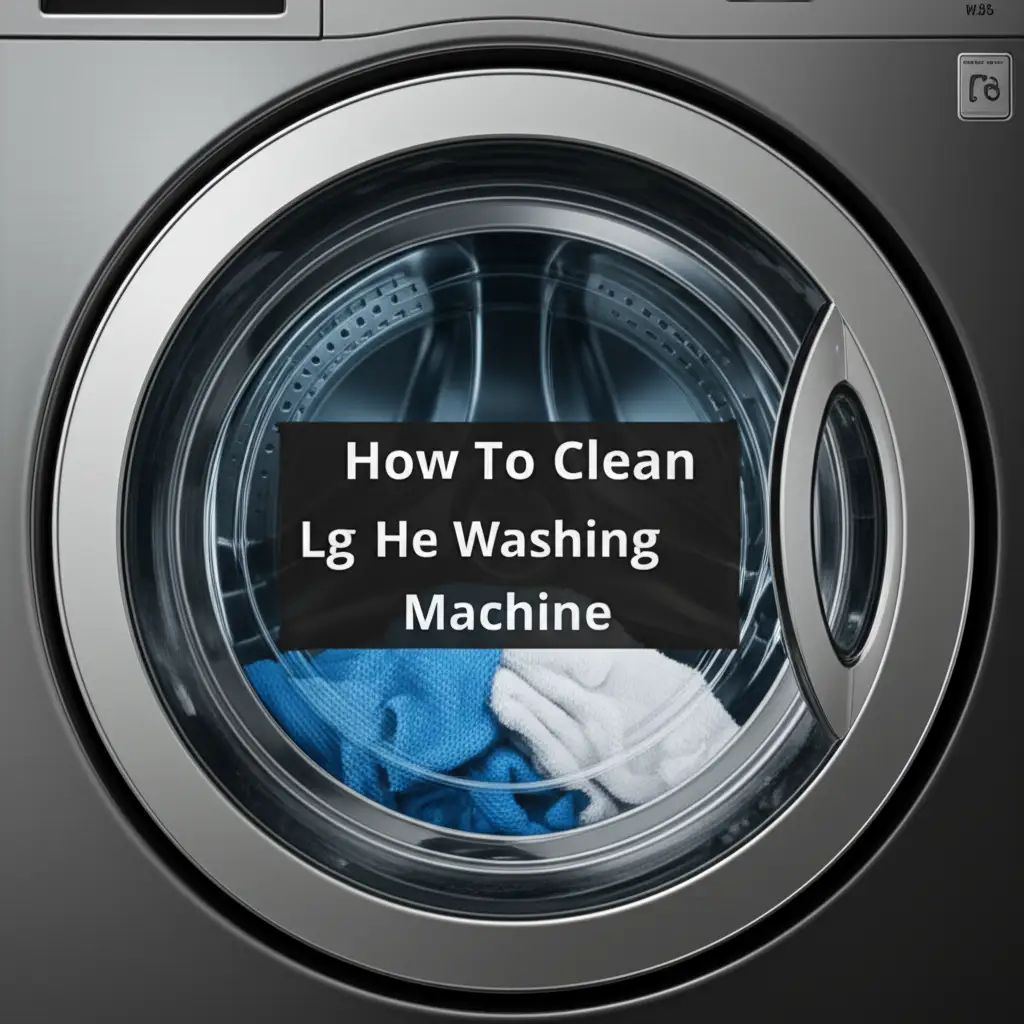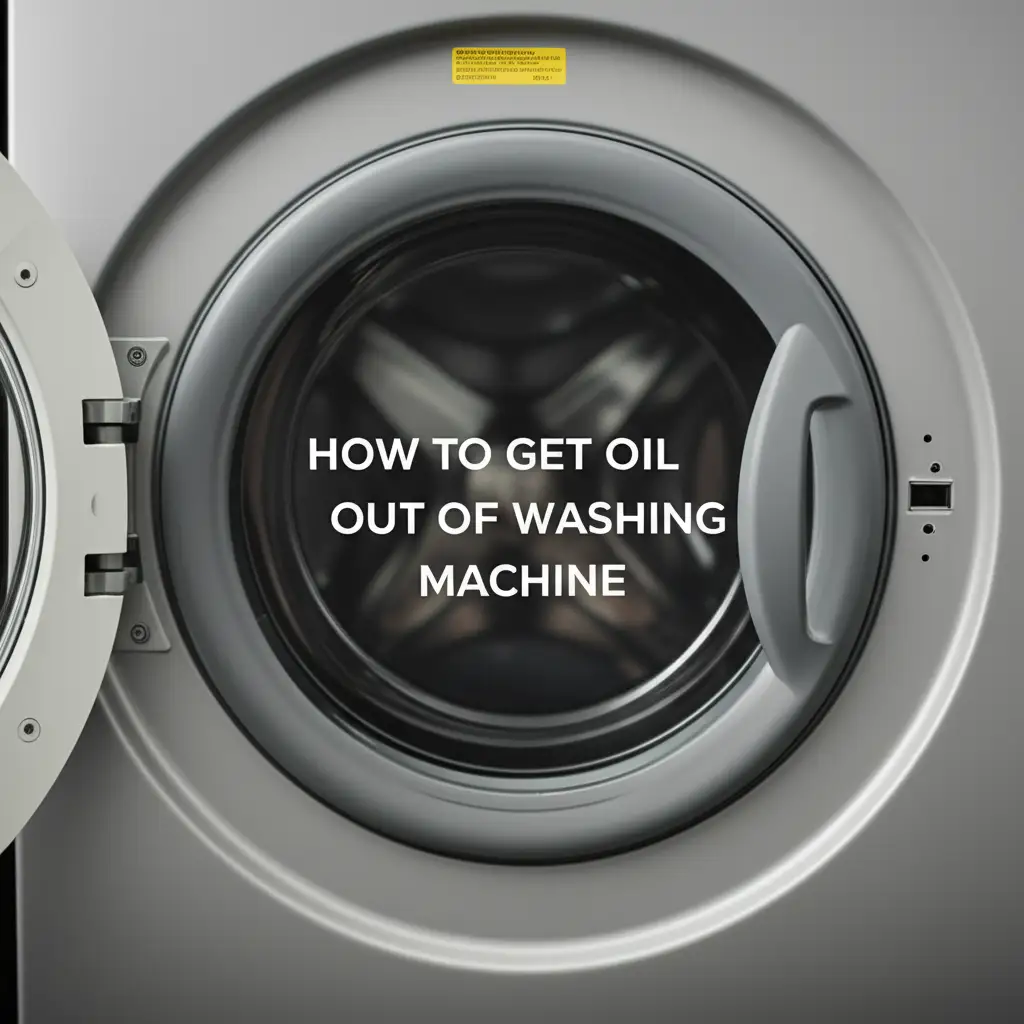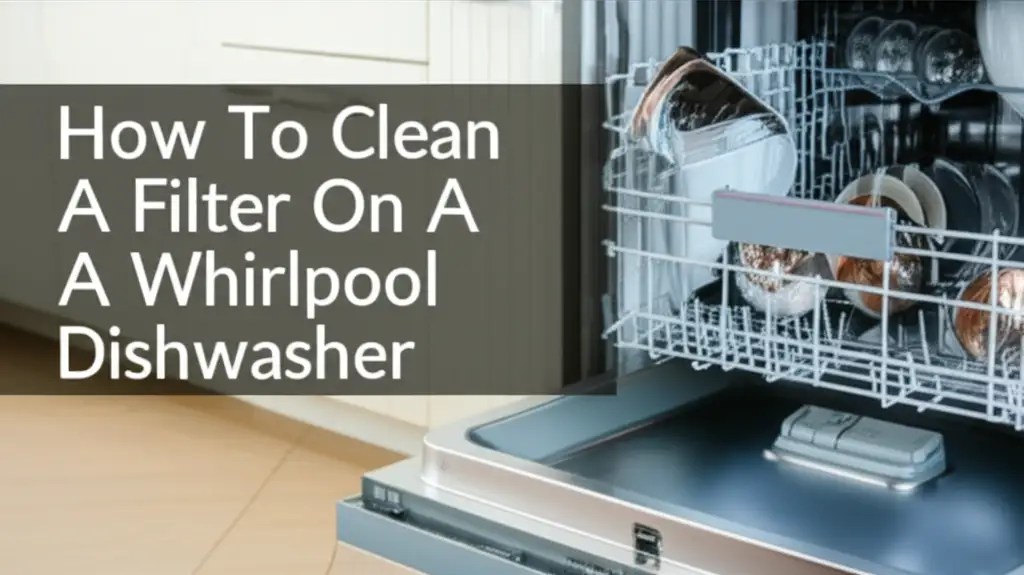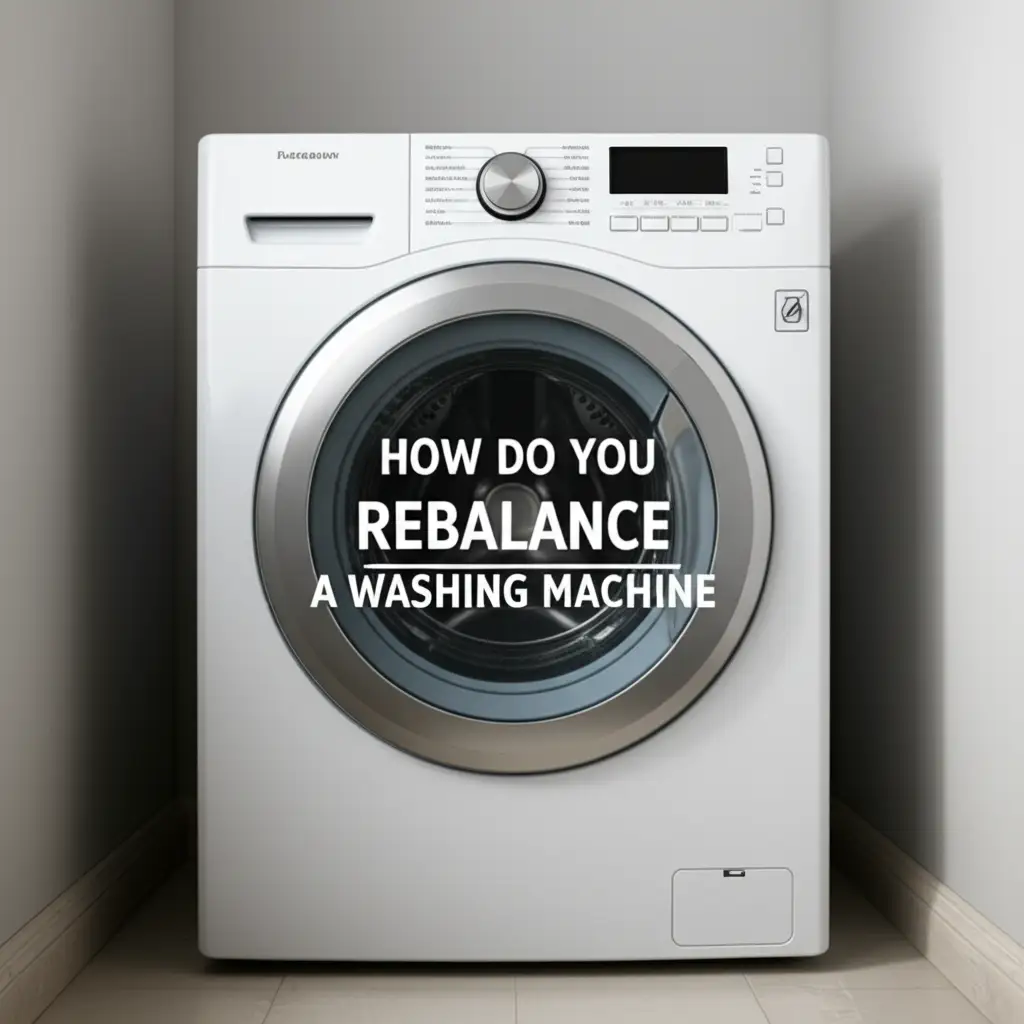· Elira Thomsen · Appliance Maintenance · 19 min read
How To Clean Lg He Washing Machine

Effortless Cleaning for Your LG HE Washing Machine
Do you ever notice a less-than-fresh smell coming from your laundry, even right after a wash? Or perhaps your LG HE washing machine itself seems to have a lingering odor? I know this feeling. High-efficiency (HE) washing machines are fantastic for saving water and energy, but they require regular cleaning to perform their best. This article will show you exactly how to clean your LG HE washing machine effectively. We will cover routine maintenance, deep cleaning steps, and tips to keep your washer smelling fresh and functioning perfectly.
Takeaway:
- Regularly clean your LG HE washing machine to prevent odors and buildup.
- Focus on the gasket, dispenser, drum, and filters.
- Use the “Tub Clean” cycle with appropriate cleaners.
- Always leave the door ajar after use.
Cleaning your LG HE washing machine regularly involves using a specialized washer cleaner, white vinegar, or baking soda, often in conjunction with the machine’s “Tub Clean” cycle. Focus on wiping down the door gasket, cleaning the detergent dispenser, and emptying the drain pump filter to remove detergent residue, mold, and mildew. This keeps your appliance fresh and prevents odors.
Why Your LG HE Washer Needs Regular Cleaning
Many people think washing machines clean themselves because they use water and soap. This is not true, especially for HE models. My LG HE washing machine, like all others, uses less water. This can lead to detergent residue and fabric softener building up inside the drum and other components. This buildup traps moisture, creating an ideal environment for mold and mildew growth.
Mold and mildew cause that musty smell you sometimes notice on your “clean” clothes. It also affects the machine’s performance over time. A dirty washing machine cannot clean clothes properly. You might see spots on your laundry or find your clothes still smell less than fresh. Keeping your LG HE washing machine clean extends its lifespan and ensures your laundry truly gets clean. It is a simple step that makes a big difference in your home’s freshness and your laundry’s quality.
Essential Tools and Cleaning Agents for LG HE Washers
Before you start cleaning your LG HE washing machine, gather the right tools and cleaning agents. Using the correct products makes the job easier and more effective. You do not need harsh chemicals for a thorough cleaning. I prefer natural solutions when possible.
Here is what you will need:
- White Vinegar: This common household item is excellent for dissolving mineral deposits and deodorizing. It is a natural disinfectant.
- Baking Soda: A mild abrasive, baking soda helps scrub away grime and absorb odors. It works well with vinegar.
- Bleach (Optional): If you have severe mold or mildew issues, a small amount of bleach can be very effective. Use it cautiously and always follow instructions.
- Washing Machine Cleaner Tablets: Many appliance manufacturers, including LG, offer specific washer cleaning tablets. These are formulated to tackle tough buildup.
- Microfiber Cloths or Sponges: For wiping down surfaces and scrubbing.
- Small Brush: An old toothbrush or a small cleaning brush is useful for tight spots like the detergent dispenser.
- Shallow Pan or Towel: For catching water when cleaning the drain pump filter.
Avoid using abrasive cleaners or harsh chemicals like ammonia, which can damage your washer’s components. Always refer to your LG owner’s manual for specific cleaning recommendations and warnings. My experience tells me that these simple items work wonders for keeping my machine sparkling.
The Importance of the LG “Tub Clean” Cycle
Your LG HE washing machine comes with a fantastic built-in feature: the “Tub Clean” cycle. This cycle is specifically designed to clean the inside of the washing machine tub. It uses higher water levels and higher temperatures than regular wash cycles. This helps to flush out detergent residue, lint, and other debris that accumulate over time.
I make sure to run this cycle at least once a month. Some people recommend every few weeks, especially if you do a lot of laundry or notice odors returning quickly. Running the Tub Clean cycle prevents the buildup of mold, mildew, and detergent scum. It is the most effective way to deep clean the interior of your washer without much effort. For a general understanding of how to clean washing machines, you can read more about how to clean wahsing machine.
To use the “Tub Clean” cycle:
- Empty the Washer: Ensure there are no clothes or other items inside the washer drum.
- Add Cleaner: Pour two cups of white vinegar directly into the detergent dispenser or drum, or add a washing machine cleaning tablet. If using bleach, add 1/2 cup to the bleach dispenser. Do not mix bleach and vinegar.
- Select Cycle: Choose the “Tub Clean” or “Cleaner” cycle on your LG washing machine’s control panel.
- Start Cycle: Press the Start/Pause button to begin the cycle. The machine will fill, agitate, soak, and drain automatically.
- Wipe Down: After the cycle finishes, wipe down the inside of the drum with a clean cloth to remove any remaining residue.
This cycle is a cornerstone of keeping your LG HE washer in top condition. Ignoring it can lead to persistent odor problems and reduced cleaning performance.
Step-by-Step Guide to Cleaning Your LG HE Front-Load Washer
LG HE front-load washers are popular for their efficiency and space-saving design. However, they are particularly prone to mold and mildew buildup around the door gasket due to trapped moisture. Here is how I tackle cleaning my LG HE front-loader:
1. Cleaning the Door Gasket (Boot)
The rubber gasket, or “boot,” around the door of a front-load washer is a prime spot for mold and mildew. This area stays damp and collects lint, hair, and detergent residue. I check this area every time I unload laundry.
- Wipe Regularly: After each wash, pull back the folds of the rubber gasket. Use a dry cloth to wipe away any standing water or debris. This simple habit prevents most issues.
- Deep Clean: For a deeper clean, mix a solution of equal parts white vinegar and water. Dip a cloth into the solution and thoroughly wipe down the entire gasket, getting into all the crevices. You might need to use a small brush for stubborn spots. For more information on general DIY cleaning, check out do it yourself washing machine.
- Address Mold: If you see mold, make a paste of baking soda and a little water. Apply it to the moldy areas, let it sit for 10-15 minutes, then scrub with a brush and wipe clean. For severe mold, a bleach solution (1/4 cup bleach to 1 gallon of water) can be used, but rinse thoroughly afterward. Always wear gloves.
2. Cleaning the Detergent Dispenser
The detergent dispenser drawer can get gummy with detergent and fabric softener residue. This buildup can block the dispenser and prevent products from reaching your clothes. It also can become a breeding ground for mold.
- Remove and Soak: Most LG detergent dispensers are removable. Pull out the drawer completely. Separate any removable compartments.
- Scrub Clean: Soak the dispenser parts in hot, soapy water for about 30 minutes. Use a small brush, like an old toothbrush, to scrub away all the caked-on residue. Rinse thoroughly under running water.
- Clean the Compartment: While the drawer is out, use a cloth dampened with vinegar or an all-purpose cleaner to wipe inside the dispenser housing. This area can also collect grime.
- Replace: Once all parts are clean and dry, reassemble the dispenser and slide it back into place.
3. Running a “Tub Clean” Cycle
As discussed earlier, running the “Tub Clean” cycle is crucial. This step cleans the inner drum and water lines. Add two cups of white vinegar or a washer cleaning tablet directly to the drum. Close the door and select the “Tub Clean” cycle. Let it complete.
4. Cleaning the Drain Pump Filter (Front-Load Specific)
Most LG front-load washers have a drain pump filter located at the bottom front of the machine. This filter traps lint, coins, and other small items that accidentally get into the wash. A clogged filter can cause drainage issues and unpleasant odors.
- Locate and Access: Look for a small access door or panel at the bottom front of your washer. Open it to find the filter.
- Prepare for Water: Place a shallow pan or old towel under the filter cap to catch any residual water.
- Drain Hose (Optional): Some models have a small drain hose next to the filter. Remove its cap and let any water drain into your pan.
- Unscrew Filter: Slowly unscrew the filter counter-clockwise. Be prepared for more water to come out.
- Clean Filter: Remove any debris (lint, hair, coins, etc.) from the filter. Rinse the filter under running water until clean. Use a brush if needed.
- Clean Housing: Use a cloth to wipe out the filter housing inside the machine.
- Reinstall: Screw the filter back in clockwise until it is tight. Close the access panel.
Regularly cleaning this filter ensures proper drainage and prevents musty smells.
Step-by-Step Guide to Cleaning Your LG HE Top-Load Washer
LG HE top-load washing machines, while not having a gasket issue like front-loaders, still require regular cleaning to prevent odors and buildup. They often use an impeller instead of a traditional agitator. How to clean top loader washing machine provides general guidance. Here is how I maintain my LG HE top-loader:
1. Running a “Tub Clean” Cycle
Just like front-loaders, the “Tub Clean” cycle is your primary tool for deep cleaning the tub of your LG HE top-loader. This cycle flushes out hidden grime.
- Empty the Washer: Make sure the drum is empty.
- Add Cleaner: Add two cups of white vinegar or a specialized washing machine cleaner directly to the wash tub. Do not use laundry detergent.
- Select and Start: Close the lid. Select the “Tub Clean” cycle on your control panel and press Start.
- Wipe Down: Once the cycle finishes, use a clean cloth to wipe down the inside of the tub, especially around the top rim.
2. Cleaning the Detergent Dispenser
Top-load HE washers also have detergent and fabric softener dispensers that can accumulate residue.
- Remove and Soak: Many top-loader dispensers are removable drawers or inserts. Carefully pull out the dispenser components.
- Scrub: Soak the dispenser parts in warm, soapy water. Use a small brush to scrub away any sticky buildup. Rinse thoroughly.
- Clean Housing: Wipe down the area where the dispenser sits in the machine with a damp cloth.
- Replace: Return the clean, dry dispenser parts to their place.
3. Cleaning Under the Impeller (If Applicable)
Some LG HE top-load washers have a removable impeller at the bottom of the tub. This part replaces the traditional agitator and can hide debris. Removing the middle part of your washing machine might be relevant here; you can find more information on how to remove middle part of washing machine.
- Check Your Manual: Consult your LG owner’s manual to see if your model has a removable impeller and how to safely remove it.
- Remove Impeller: If removable, use a screwdriver to unscrew the cap in the center. Carefully lift the impeller straight up.
- Clean Debris: You might find lint, hair, and even small items trapped underneath. Remove all debris.
- Clean Impeller and Tub Base: Scrub the underside of the impeller and the tub’s base where it sits using a brush and soapy water. Rinse well.
- Reinstall: Place the impeller back, aligning it correctly, and secure it with the screw.
If your LG HE top-loader has a traditional agitator, follow guidance for how to clean washing machine agitator.
4. Wiping Down the Exterior and Control Panel
Do not forget the outside of your washer.
- Wipe Surfaces: Use a soft, damp cloth with a mild all-purpose cleaner to wipe down the top, sides, and front of the machine.
- Control Panel: Gently wipe the control panel. Avoid spraying cleaner directly onto the panel to prevent damage. Spray the cloth first.
- Polish (Optional): For a streak-free shine, you can use a stainless steel cleaner on stainless steel surfaces.
Keeping the exterior clean improves the look of your laundry area.
Preventing Future Odors and Buildup
Cleaning your LG HE washing machine is important, but preventing issues in the first place is even better. I have learned a few habits that significantly reduce the need for constant deep cleaning. These tips help maintain freshness between your monthly cleaning cycles.
- Use HE Detergent ONLY: High-efficiency (HE) detergents are specially formulated to produce low suds. Regular detergents create too many suds in HE washers, leading to excessive residue buildup and odors. Always look for the “HE” symbol on your detergent bottle. Using the correct detergent is the simplest way to prevent major problems.
- Use the Right Amount of Detergent: More detergent does not mean cleaner clothes. In an HE washer, too much detergent creates excessive suds and residue. This residue does not rinse away completely, leaving a film inside the machine. Follow the detergent manufacturer’s instructions for dosage, typically based on load size and water hardness.
- Leave the Door Ajar (Front-Loaders): After every wash cycle, leave the washer door slightly open. This allows air to circulate inside the drum and helps the interior dry completely. Moisture is mold’s best friend. Letting the machine air out prevents mold and mildew from growing around the gasket and inside the drum. This simple habit is probably the most crucial for front-loaders.
- Wipe Down the Gasket After Each Use (Front-Loaders): As mentioned earlier, a quick wipe of the rubber gasket after each load can remove trapped moisture and lint. This stops mold before it starts. I keep a small, dry cloth near my washer just for this purpose.
- Remove Laundry Promptly: Do not leave wet laundry sitting in the washer after the cycle finishes. Damp clothes sitting in a closed machine create a humid environment perfect for mold and mildew growth in the machine itself and on your clothes. Transfer laundry to the dryer immediately.
- Clean the Drain Pump Filter Regularly: For front-load models, make it a habit to check and clean the drain pump filter every few months, or more often if you notice drainage issues or odors. This prevents clogs and keeps water flowing freely.
- Run a Maintenance Cycle Monthly: Even if your machine does not smell, stick to a routine of running the “Tub Clean” cycle once a month. This proactive approach flushes out any accumulating residue.
- Clean Dispenser Regularly: Wipe down or remove and clean the detergent dispenser once a week or every couple of weeks, depending on how often you do laundry.
By following these preventative measures, you can drastically reduce odors and keep your LG HE washing machine running efficiently and smelling fresh for years. Consistent small efforts prevent bigger cleaning challenges down the line.
Troubleshooting Common LG Washer Cleaning Issues
Even with regular cleaning, you might encounter some persistent issues with your LG HE washing machine. Knowing how to troubleshoot these problems can save you time and frustration. I have faced a few of these myself.
Persistent Musty Odor
If you still smell a musty odor after cleaning, consider these points:
- Gasket Residue: For front-loaders, re-examine the door gasket. Mold can sometimes embed deep within the rubber folds. You might need to apply a stronger solution (like a bleach solution, if safe for your machine and rinsed well) and let it sit longer, or use a scrubbing brush to remove stubborn mold.
- Over-Sudsing: Are you sure you are using HE detergent and the correct amount? Too much sudsing leaves residue that breeds odor. Try using even less detergent for a few washes to see if the problem improves.
- Drain Pump Filter: For front-loaders, a partially clogged drain pump filter can hold stagnant, smelly water. Double-check that it is completely clean.
- Water Quality: Hard water can contribute to mineral buildup, which traps odors. Consider using a water softener additive with your detergent if you have hard water.
- Ventilation: Ensure your laundry room is well-ventilated. A damp, closed-off room can contribute to the general humidity, affecting your washer.
Leftover Residue on Clothes
If you see white streaks or residue on your clothes after washing, it usually points to detergent buildup.
- Detergent Amount: The most common cause is using too much detergent. Reduce the amount you use per load. HE washers need very little.
- Detergent Type: Confirm you are using HE detergent. Non-HE detergents create too many suds.
- Load Size: Overloading the washer prevents proper rinsing. Clothes need space to tumble freely. Wash smaller loads.
- Water Temperature: Sometimes, cold water does not fully dissolve powdered detergents. Try a warm water wash for a cycle or two.
- Dispenser Clog: Ensure your detergent dispenser is clean and clear. A clogged dispenser can prevent detergent from being dispensed properly, leading to residue.
Mold Spots on the Drum
Seeing black spots inside the stainless steel drum itself usually means the mold problem is severe.
- Aggressive Tub Clean: Run two or three “Tub Clean” cycles consecutively. Use a washer cleaner tablet in the first cycle, and then white vinegar in subsequent cycles.
- Manual Scrubbing: If spots remain, try to scrub them gently with a non-abrasive sponge and a baking soda paste. Wipe clean.
- Professional Help: For very stubborn or widespread mold, you might consider professional appliance cleaning services. This is rare but possible in extreme cases.
Always remember that prevention is easier than cure. Regular maintenance, as outlined in this guide, is the best defense against these common LG HE washing machine issues.
When to Consider Professional Help
While cleaning your LG HE washing machine is largely a DIY task, there are times when calling a professional appliance technician is the wisest course of action. I always try to fix things myself first, but I know when to step back.
Here are a few scenarios where professional help might be necessary:
- Persistent Odors After Thorough Cleaning: If you have followed all cleaning steps meticulously, including multiple “Tub Clean” cycles, gasket cleaning, and filter cleaning, but a strong, unpleasant odor persists, there might be a deeper issue. This could indicate mold growth in inaccessible parts of the machine, such as inside the hoses or beyond the visible drain filter area.
- Machine Malfunctions: If your LG washing machine starts having performance issues that seem related to cleanliness or drainage, a professional can diagnose the problem. These issues include:
- Water not draining properly: This can be a clog beyond the user-serviceable filter.
- Error codes related to drainage or fill issues: These often point to internal sensor or pump problems.
- Unusual noises during cycles: This might indicate loose parts or a motor issue.
- Visible Mold in Inaccessible Areas: While you can clean the gasket and drum, if you notice mold deep within the machine’s inner workings (e.g., through the door, you see mold on components you cannot reach), a professional has the tools and expertise to safely disassemble parts and clean them.
- Damage During DIY Cleaning: If you accidentally damage a component while attempting a deep clean (e.g., a filter cap, hose, or sensor), it is best to call a qualified technician for repair. Trying to fix complex internal parts yourself can void warranties or cause further damage.
- Lack of Time or Confidence: Sometimes, you just do not have the time or feel confident enough to perform a full deep clean, especially if it involves specific components like the impeller. A professional can quickly and efficiently clean your machine.
Regular DIY cleaning is crucial for routine maintenance. However, do not hesitate to seek expert assistance if you suspect a more complex problem or if the issue falls outside simple cleaning procedures. A professional can ensure your LG HE washing machine continues to operate safely and efficiently.
Frequently Asked Questions
How often should I clean my LG HE washing machine?
You should clean your LG HE washing machine at least once a month. If you do laundry frequently, live in a humid climate, or use a lot of fabric softener, aim for every two to three weeks. Regular cleaning prevents odors and buildup.
Can I use bleach to clean my LG HE washer?
Yes, you can use bleach, but with caution. Add about 1/2 cup of liquid chlorine bleach to the bleach dispenser or directly to the drum for a “Tub Clean” cycle. Never mix bleach with vinegar, as it creates toxic fumes. Bleach is good for sanitizing and removing mold.
What happens if I don’t clean my LG HE washing machine?
If you do not clean your LG HE washing machine, detergent and fabric softener residue will build up. This creates a breeding ground for mold and mildew, leading to musty odors in your machine and on your clothes. It can also reduce the machine’s efficiency and lifespan.
Why does my LG front-load washer smell after cleaning?
A persistent smell often means mold or residue is still present in hidden areas. Re-inspect the door gasket thoroughly, pulling back all folds. Ensure the drain pump filter is completely clean. Make sure you are always leaving the door ajar after use to allow the machine to dry out completely.
Can I use homemade cleaners like vinegar and baking soda?
Yes, white vinegar and baking soda are excellent natural cleaners for LG HE washing machines. You can run a “Tub Clean” cycle with two cups of white vinegar or a mixture of 1/2 cup baking soda and 1/2 cup water. These help to deodorize and break down residue effectively.
Is HE detergent really necessary for LG HE washers?
Absolutely. High-efficiency (HE) detergent is formulated to produce low suds, which is essential for HE washing machines that use less water. Using regular detergent creates excessive suds, leading to residue buildup, clogged lines, and unpleasant odors, and can even damage your machine over time.
Conclusion
Keeping your LG HE washing machine clean is not just about making your laundry smell good; it is about extending the life of your appliance and ensuring truly clean clothes. I have seen firsthand how much difference regular maintenance makes. By consistently cleaning the gasket, dispenser, drum, and drain pump filter, and by utilizing the “Tub Clean” cycle monthly, you can prevent most common issues like musty odors and residue buildup.
Remember to always use HE detergent and leave the door ajar after each use. These small habits significantly contribute to a fresh and efficient machine. If you follow these comprehensive steps on how to clean your LG HE washing machine, you will enjoy fresh, clean laundry for years to come. Take action today and give your LG washer the care it deserves. Your clothes (and your nose) will thank you!
- LG washing machine
- HE washer cleaning
- washing machine maintenance
- front loader cleaning
- top loader cleaning





